ISO 42001 Gap Analysis: Step-by-Step Guide, Template, and Best Practices
Conducting an ISO 42001 GAP analysis is a critical first step toward trustworthy and compliant AI systems. With thoroughly examining your organization’s AI governance against the standard’s requirements, you gain clear insight into where you stand and what needs improvement. This process, when done with a structured approach and the right tools, demystifies the path to ISO 42001 compliance.
In this Article
Overview of ISO 42001 and Its Relevance
ISO/IEC 42001 is the first AI Management System (AIMS) standard. It provides organizations a framework to ensure AI is developed and used ethically, securely, and transparently.
The standard covers key requirements such as AI governance, risk management, impact assessments, and lifecycle management, helping build trustworthy AI systems.
While adoption is voluntary, ISO 42001 is rapidly gaining traction as a benchmark of excellence in responsible AI practices. Its guidance aligns with emerging regulations (for example, the EU AI Act) and demonstrates an organization’s commitment to ethical AI – a signal of trust for partners, customers, and regulators.
ISO 42001’s relevance spans any industry leveraging AI, ensuring that AI-driven innovations are balanced with governance and risk mitigation for secure and fair outcomes.
Step-by-Step Guide to Conducting an ISO 42001 GAP Analysis
Performing a GAP Assessment for ISO 42001 involves reviewing your current AI governance against the standard’s requirements to identify compliance gaps. Below is a structured step-by-step guide:
Step 1. Preparation and Scope Definition
Start by defining the scope of the gap analysis. Determine what AI systems, processes, and departments are in scope. Assemble a cross-functional team (e.g. IT, compliance, data science, risk management) and ensure they are familiar with ISO 42001’s clauses and controls.
This groundwork sets a clear boundary for the assessment and ensures all relevant AI uses in the organization are considered.
Step 2. Review Current AI Practices and Documentation
Gather and document your organization’s current AI-related practices. This includes policies, procedures, and controls around AI development or use (e.g. existing AI ethics policies, risk assessment reports, data handling procedures, etc.). Understanding “where you are” is crucial; perform interviews or surveys with stakeholders to capture how AI is being used and governed today.
Be thorough in identifying all AI applications (often AI may be used in tools without formal awareness). Documenting the status quo provides the baseline for comparison.
Step 3. Compare Against ISO 42001 Requirements
Systematically compare your current state to each requirement of ISO 42001. Use the standard’s structure (Clauses 4–10 and Annex A controls) as a checklist. For each clause, ask whether your current practices meet the intent.
Context of the Organization (Clause 4)
Have you defined internal/external issues and stakeholder requirements related to AI?

Leadership (Clause 5)
Is top management committed to AI governance with clear policies (e.g. an AI policy) and assigned roles for AI oversight?

Planning (Clause 6): Do you perform AI risk assessments and define objectives for AI management? Are AI risk treatment plans in place?
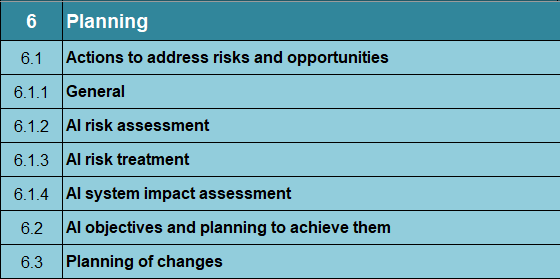
Support (Clause 7)
Do you have adequate resources and competencies for AI? Is there awareness training on AI ethics and security? Are communications (internal/external) about AI defined?
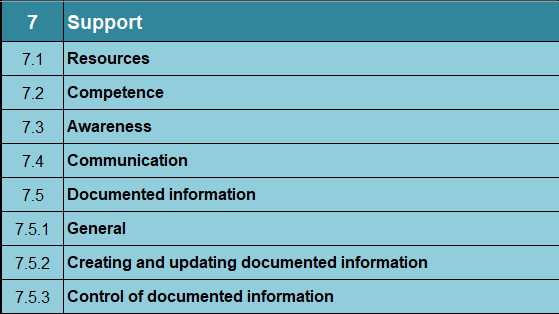
Operation (Clause 8)
Are there controls over the AI system lifecycle – from development or acquisition to deployment? This includes data management for AI, testing, monitoring of AI outputs, and managing third-party AI components.

Performance Evaluation (Clause 9)
Do you monitor and measure AI system performance and compliance (e.g. through internal audits, KPIs for AI processes, regular AI impact assessments)?
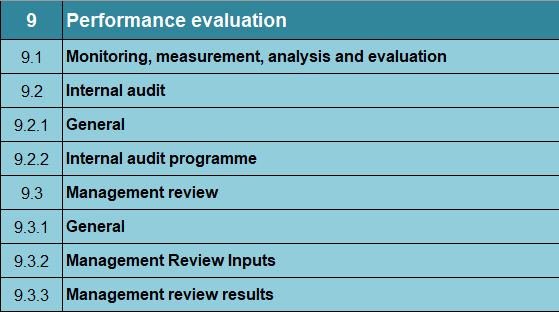
Improvement (Clause 10)
Is there a process for corrective actions and continuous improvement in your AI management system?

Annex A Controls
Beyond the high-level requirements, ISO 42001 provides a detailed set of AI-specific controls in Annex A (similar to Annex A of ISO 27001). Review each control area (AI policies, organizational roles, data management, AI development processes, impact assessment, AI monitoring, third-party management, etc.) against your practices. Treat each control as a question: “Do we have this in place? If so, is it effective and documented?”
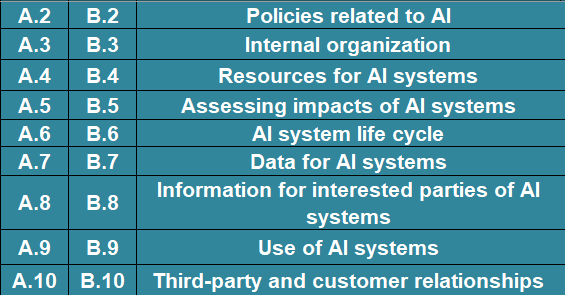
Step 4. ISO 42001 GAP Analysis Template
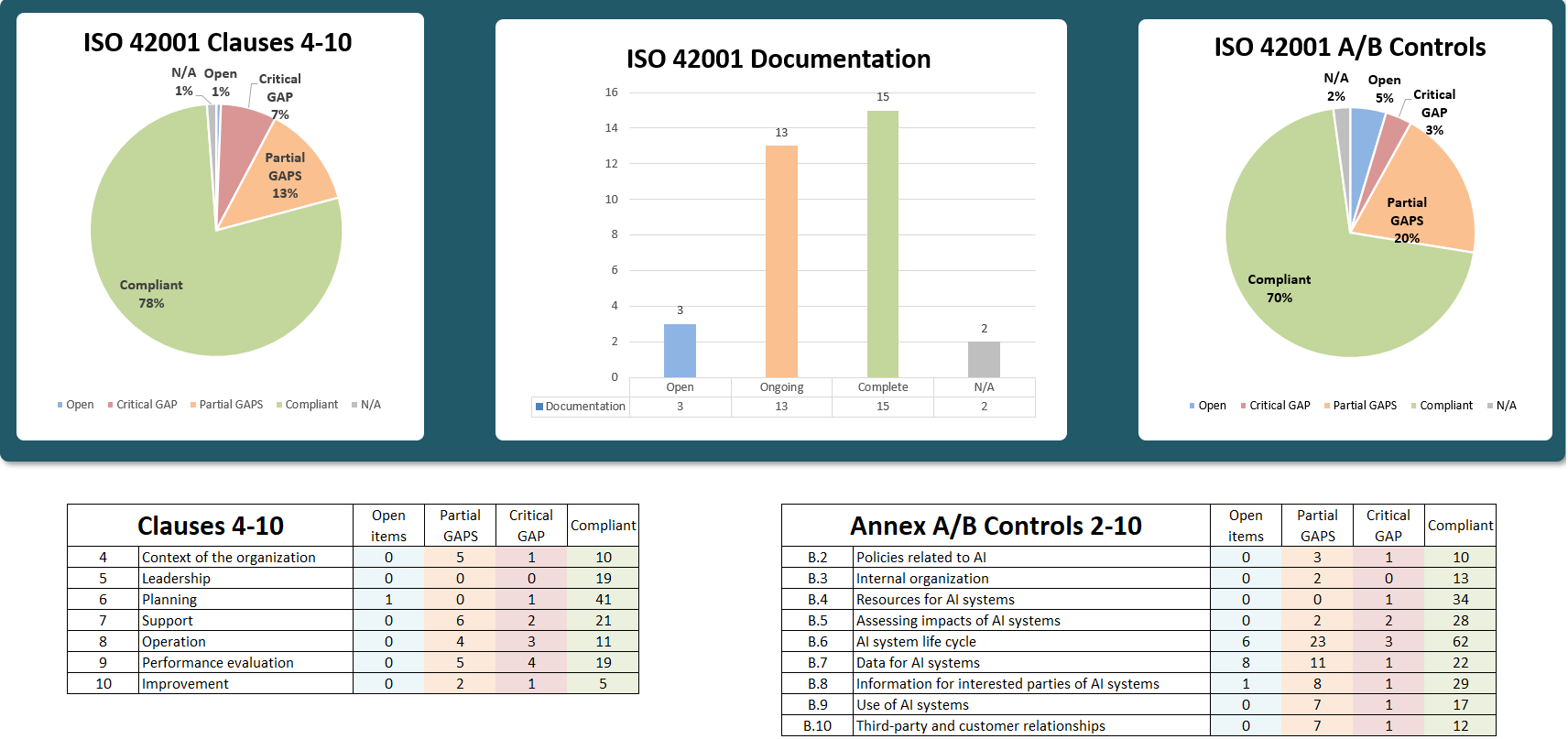
Use an ISO 42001 GAP Analysis Template (in Excel) to track compliance for each clause/control, marking them as “Compliant”, “Partially Compliant”, or “Not Compliant” along with notes. This systematic comparison will identify gaps – areas where current practices fall short of ISO 42001 requirements.
Step 5. Document and Prioritize Gaps
Once the analysis is complete, document all identified gaps. For each non-conformity or weakness, describe what is missing or inadequate relative to the ISO 42001 requirement. Then prioritize the gaps based on risk and importance. For example, gaps related to fundamental governance or high-risk AI applications may be deemed high priority, whereas minor documentation gaps might be lower.
The gap analysis report should clearly highlight where improvements are needed and the potential impact if not addressed. This helps the organization focus on critical issues first.
Step 6. Develop an Action Plan
The final step of the gap assessment is translating findings into a roadmap for compliance. For each gap, define concrete actions to bridge it: e.g. “Develop an AI Ethics Policy and get executive approval” for a policy gap, or “Initiate AI system risk assessment process for all high-risk AI applications” for a risk management gap. Assign owners and timelines to each action.
This action plan acts as a guide for implementing changes needed to align with ISO 42001. At this stage, management should review and allocate necessary resources to execute the improvements. The outcome is a clear path from “where you are” to “where you need to be” to achieve ISO 42001 readiness.
Challenges and Best Practices in Conducting the Analysis
Conducting an ISO 42001 gap analysis can be complex. Organizations often encounter common challenges, but following best practices can help overcome them:
Common Challenges:
Lack of Familiarity with Requirements
ISO 42001 is a new standard, and teams may initially struggle to interpret its clauses and Annex controls. The breadth of topics (ethics, bias, security, etc.) can be daunting.
Identifying All AI Uses
AI may be embedded in various tools and processes. One challenge is simply discovering where AI is used or developed across the organization (including “shadow AI” solutions adopted without central IT oversight).
Cross-Functional Coordination
A comprehensive gap assessment spans technical, ethical, and governance domains, so no single person has all the answers. It requires input from multiple departments (IT, data science, compliance, HR for training, etc.), which can be challenging to coordinate.
Resource and Time Intensity
Conducting a thorough gap analysis is time-consuming. Reviewing detailed controls and gathering evidence manually (especially for a large organization) can strain resources. If done without tools, tracking dozens of requirements and documents becomes cumbersome.
Subjectivity and Scope Creep
Without a structured approach, the analysis can become subjective or stray off scope. Teams might either overlook certain requirements or dive too deep into implementation details prematurely.
Changing AI Landscape
AI technologies and guidelines develop rapidly. Ensuring the gap analysis remains up-to-date (e.g., aligning with the latest risks or regulatory expectations) is an ongoing challenge.
Best Practices to Overcome Them:
Educate and Train the Team
Before the gap analysis, invest time in training the assessment team on ISO 42001’s requirements. Use summaries or guidesto build a common understanding. This reduces confusion and ensures everyone speaks the same language during the analysis.
Use a Structured Checklist
Leverage an ISO 42001 gap analysis checklist or template to guide the process. A structured questionnaire covering all clauses and Annex A controls ensures no requirement is missed and adds objectivity. It essentially turns the standard into a list of yes/no or compliant/not compliant questions.
Plan and Involve the Right Stakeholders
Define a clear plan or agenda for the gap analysis and identify which roles need to provide input for each section. For example, involve leadership for policy and strategy questions, IT or engineering for lifecycle and data controls, HR for training and competence questions. Scheduling focused sessions with each function helps gather accurate information. This multi-disciplinary approach is crucial given ISO 42001’s wide scope.
Be Thorough and Honest
Treat the gap assessment as a “drains up” review – an in-depth examination of everything related to AI in the organization. Encourage honesty about weaknesses; the goal is to identify gaps, not to “pass.” It’s better to uncover uncomfortable gaps now than during a certification audit or, worse, after an AI failure. A candid assessment will yield a more actionable improvement plan.
Prioritize Risks and Quick Wins
Not all gaps are equal. Use a risk-based lens to prioritize which gaps to address first. Focus on high-risk issues (e.g. lack of AI risk assessment procedure) and legal/ethical must-haves. Also identify “quick wins” – simpler fixes that can be done promptly to build momentum. This prioritization ensures efficient use of resources and keeps the improvement project manageable.
Leverage Existing Management Systems
If your organization already follows other ISO standards (like ISO 27001 or ISO 9001), capitalize on those structures. ISO 42001 follows a similar high-level structure (HLS) and can integrate with existing processes. Leverage existing risk management, document control, and audit procedures – this reduces duplication. Many controls (e.g. supplier management, incident handling) might already exist under other frameworks and can be extended to cover AI.
Continuous Review and Expertise
If internal knowledge is limited, consider bringing in an expert or consultant for the gap analysis phase. An experienced eye can validate your findings and ensure no requirement is misinterpreted. Additionally, as you implement changes, periodically revisit the gap analysis to update it – treat it as a living document that tracks progress until you are ready for formal certification.
Tools and Frameworks for ISO 42001 GAP Analysis
Having the right tools can significantly streamline an ISO 42001 gap assessment. Many organizations rely on Excel-based checklists, templates, and questionnaires to manage the process:
Excel Gap Analysis Checklists
A common approach is using a spreadsheet that lists all ISO 42001 requirements (Clauses 4–10 and Annex A/B controls) as individual line items. For each item, the team can fill in the current status, evidence notes, action required, and a compliance rating. This provides a clear gap-by-gap view. For example, an Excel template might have sections for each clause (Context, Leadership, etc.) and sub-sections for each control, with status marked as Compliant, Partially Compliant, or Not Compliant. Such a checklist acts as both a questionnaire and a tracking tool, ensuring a methodical assessment. It also serves as documentation of the gap analysis results that can be revisited and updated.
Gap Assessment Questionnaires
Some organizations use detailed questionnaires (in Word or Excel) where each question corresponds to a requirement or control. Team members or process owners answer these questions, and the responses reveal gaps. This is essentially another format of the checklist approach. The advantage of a questionnaire is that it can be circulated to subject matter experts to fill in answers asynchronously, which is useful for large organizations.
Automated Compliance Tools
In addition to Excel, there are software platforms and frameworks that can assist with ISO 42001 gap analyses. For instance, compliance management systems (like those used for ISO 27001) are starting to include ISO 42001 modules. These tools often come with pre-mapped controls, automated check functions, and dashboards. For example, some platforms provide automated tests for proactive gap assessments, pre-built policy templates, evidence collection tools, and risk assessment modules specifically aligned to ISO 42001. They centralize the process and can save time by auto-tracking progress and generating reports. While not necessary, such tools can be helpful especially if pursuing multiple certifications simultaneously or if you want continuous monitoring.
Framework Alignment Tools
ISO 42001 shares principles with AI risk frameworks like the NIST AI Risk Management Framework (RMF). Some tools or checklists might integrate controls from multiple frameworks. For example, using a combined questionnaire that addresses ISO 42001 requirements alongside NIST AI RMF functions can give a broader view of AI governance maturity. However, if the goal is ISO 42001 certification, it’s advisable to use a checklist explicitly mapped to ISO 42001 clauses to ensure nothing is missed.
Many organizations begin with an Excel checklist due to its familiarity and flexibility. Ensure that whatever tool you choose, it is easy to update, share, and collate input from your team. The output of the tool (be it a filled spreadsheet or an automated report) will be the roadmap of tasks for your ISO 42001 implementation project.
Industry-Specific Applications of ISO 42001 GAP Analysis
ISO 42001’s principles apply to any organization using or developing AI, but certain industries have particular considerations when conducting a gap analysis due to the nature of AI’s impact in those fields. Below we discuss how the GAP assessment might be tailored in healthcare, finance, and IT/technology sectors:
Healthcare Industry (AI in Healthcare)
In healthcare, AI is used for applications like diagnostics (e.g. imaging analysis), patient data analytics, and decision support. A gap analysis for ISO 42001 in a healthcare organization should pay special attention to patient safety, data privacy, and ethics:
Regulatory Compliance
Healthcare AI systems often must comply with health regulations (HIPAA in the US, GDPR in EU for patient data). The gap assessment should check controls for data privacy and security in AI (Clause 8 and Annex on data management) against these regulatory requirements.
AI Bias and Fairness
In healthcare, biased AI could lead to unequal care. Ensuring fairness and non-discrimination is paramount. The gap analysis should evaluate if processes exist to detect and mitigate bias in AI algorithms and whether outcomes are explainable to clinicians and patients.
Risk and Impact Assessment
ISO 42001 requires AI impact assessments – in healthcare this means assessing potential harm or unintended consequences of AI on patient outcomes. A strong focus will be on risk management (Clause 6): does the organization rigorously vet AI tools before deployment for safety and efficacy? Are there contingency plans if the AI gives a wrong recommendation?
Example – EHS Case
Emirates Health Services (EHS) was one of the first healthcare providers assessed against ISO 42001. They found that implementing the standard helped in deploying AI for medical imaging in a responsible way. This highlights that healthcare organizations see ISO 42001 as a means to ensure AI innovations (like radiology AI) are integrated with robust governance. A gap analysis in such a context would likely reveal gaps in formalizing processes that were informally done, such as validating AI accuracy or getting informed consent for AI-assisted decisions.
Best Practices
In healthcare AI gap analysis, involve clinical leadership in addition to IT – ensure medical ethics committees or similar bodies are part of reviewing AI governance gaps. Prioritize gaps related to patient safety as “critical”. Also, mapping ISO 42001 requirements to existing healthcare quality management systems (like ISO 13485 for medical devices or JCI standards for hospitals) can create efficiencies.
Finance Industry (AI in Finance/FinTech)
Financial services increasingly use AI for credit scoring, fraud detection, algorithmic trading, customer service (chatbots), etc. A gap assessment for ISO 42001 in finance should consider transparency, fairness, and accountability, as these directly tie to customer trust and regulatory scrutiny:
Transparency and Explainability
Many financial regulators require that decisions (like loan approvals or denials) be explainable. The ISO 42001 gap analysis should check for controls ensuring AI decisions can be interpreted and explained (Annex A control on information to interested parties). If the current AI models are “black boxes,” that would be a gap to address.
Bias and Fair Lending
Fair lending laws mean AI models must not discriminate. The gap analysis should assess if the organization has a process to regularly test AI models for biases against protected groups. Clause 8 and Annex controls about use of AI systems and monitoring would apply here.
Risk Management and Governance
Finance firms typically have strong risk management for credit and operational risk; the gap is whether AI-specific risks are integrated. For instance, does the risk committee include AI risks (model risk, data drift, cybersecurity of AI)? An ISO 42001 gap analysis might uncover that while general risk management is mature, explicit AI risk assessment procedures (Clause 6.1.2 and 6.1.4 on risk and impact assessments) are missing and need to be implemented.
Regulatory Alignment
Financial regulators (like banking authorities or securities regulators) are issuing AI guidance. An ISO 42001 gap assessment helps ensure the firm’s AI practices align with these expectations. Gaps might be found in documentation – for example, lacking a formal AI ethics policy or not conducting annual reviews of AI models – which ISO 42001 would require (Clause 5.2 for policy, Clause 10 for improvement).
Customer Trust and Reporting
In finance, an error by an AI can have immediate financial and reputational impact. Best practice during gap analysis is to involve compliance officers and even get input from an auditor’s perspective: what AI governance would they expect to see? This helps identify gaps that could later concern regulators or clients. Filling those gaps (like robust model validation reports, audit trails for AI decisions) is critical.
Outcome
A tailored gap analysis in finance will produce an action plan that often includes establishing AI oversight committees, improving documentation (policies, model governance procedures), and technical controls for data quality and bias checks.
IT and Technology Industry (AI Developers and IT Departments)
The IT industry covers both companies that develop AI solutions (e.g. software firms, AI startups) and IT departments in any enterprise that implement AI tools. ISO 42001 gap analysis in this context focuses on development practices, technical robustness, and integration with existing IT governance:
AI Development Lifecycle
For organizations creating AI systems, the gap analysis scrutinizes the software development lifecycle against ISO 42001. This means checking if there are processes for requirements analysis, testing, validation, and deployment specific to AI (Annex A includes controls for AI system development and algorithmic lifecycle). A likely gap might be the lack of a formal AI System Lifecycle management process – many tech teams have agile development, but ISO 42001 expects documented control over things like data preparation, model training, verification, and updates with an eye on risk.
Data and Infrastructure
IT teams must ensure data used for AI is managed properly. The gap assessment will evaluate data governance (is there a data quality and bias check process for training data? how is data lineage and provenance tracked?) and infrastructure (are there measures to secure AI models and data?). Any weaknesses in devops/MLOps practices related to AI would be noted as gaps.
Integration with InfoSec
Tech companies often have ISO 27001 or other security standards. ISO 42001 adds AI-specific nuances. The gap analysis should verify that the security controls extend to AI models – for instance, protections against adversarial attacks on AI, or ensuring AI doesn’t inadvertently leak sensitive information. If ISO 27001 controls are implemented, many will overlap; the gap analysis ensures AI-specific threats are also considered.
Innovation vs. Governance Balance
A cultural challenge in tech can be balancing fast-paced AI innovation with governance. The gap analysis might reveal that documentation or formal governance is lacking (startups, for example, might not have an AI ethics committee or thorough risk registers). Identifying these gaps is crucial for scaling safely. Best practice is to not stifle innovation but introduce checkpoints – the gap analysis may recommend actions like code of ethics for AI, review boards for high-risk AI projects, etc.
IT Service Management
For IT departments deploying third-party AI solutions, the gap analysis should include vendor management. Annex A controls on third-party and customer relationships (A.10.x controls) require oversight of AI provided by external parties. A gap might be an absence of due diligence process for evaluating AI services/vendors. Closing that gap might mean implementing an AI supplier assessment checklist before procurement.
Applicability
It’s worth noting ISO 42001 is industry-agnostic – it applies to any org that uses AI, big or small. In practice, tech companies are often early adopters. A gap analysis in a tech firm might be somewhat easier if the culture already embraces frameworks and rapid iteration (gaps can be quickly fixed with updates to processes). Many IT organizations also align ISO 42001 with frameworks like NIST AI RMF to cover both compliance and technical best practices.
In all industries, the core process of gap analysis remains similar – assessing current vs. required practices. The emphasis of what to look for shifts with industry-specific risks and expectations.
Healthcare focuses on safety and ethics, finance on fairness and transparency, and IT on development rigor and security. ISO 42001’s Annex D even provides guidance on using the AI management system across different domains and sectors, acknowledging that each industry might implement controls differently.
Conclusion
Organizations that proactively perform such GAP assessments position themselves ahead of the curve.
This process, when done with a structured approach and the right tools, demystifies the path to ISO 42001 compliance. It helps prioritize actions – from drafting missing policies to refining technical processes – and sets the stage for successful implementation of an AI Management System.
An ISO 42001 gap analysis shines a light on the gaps between current practices and best practices, enabling organizations to bridge those gaps effectively.
FAQ
What is ISO 42001 and why is it important?
ISO 42001 is a global standard for AI Management Systems, offering guidelines and controls to ensure artificial intelligence is developed and used ethically, securely, and transparently. It helps organizations mitigate risks, build stakeholder trust, and align with emerging AI regulations.
What does “GAP Assessment” mean in the context of ISO 42001?
A GAP Assessment is a process that compares your current AI governance, policies, and processes against the requirements of ISO 42001. It identifies where you are compliant, partially compliant, or non-compliant, highlighting areas needing improvement.
Why should organizations conduct an ISO 42001 Gap Analysis?
Performing a gap analysis helps you understand your current AI practices and pinpoint missing or insufficient controls. It’s a crucial step toward achieving ISO 42001 compliance and ensuring your AI systems are responsibly managed from development to deployment.
Which tools or templates can help with the Gap Analysis?
Excel-based ISO 42001 Gap Analysis Template files and ready-made checklists are popular because they list all requirements in a structured way. Some organizations also use specialized compliance software that automates evidence collection and tracks remediation steps.
How long does it take to complete an ISO 42001 Gap Analysis?
Timing depends on your organization’s size, complexity, and the maturity of your current AI processes. A small startup might conduct a gap analysis in a few weeks, while larger enterprises could take a few months to thoroughly assess all AI applications.